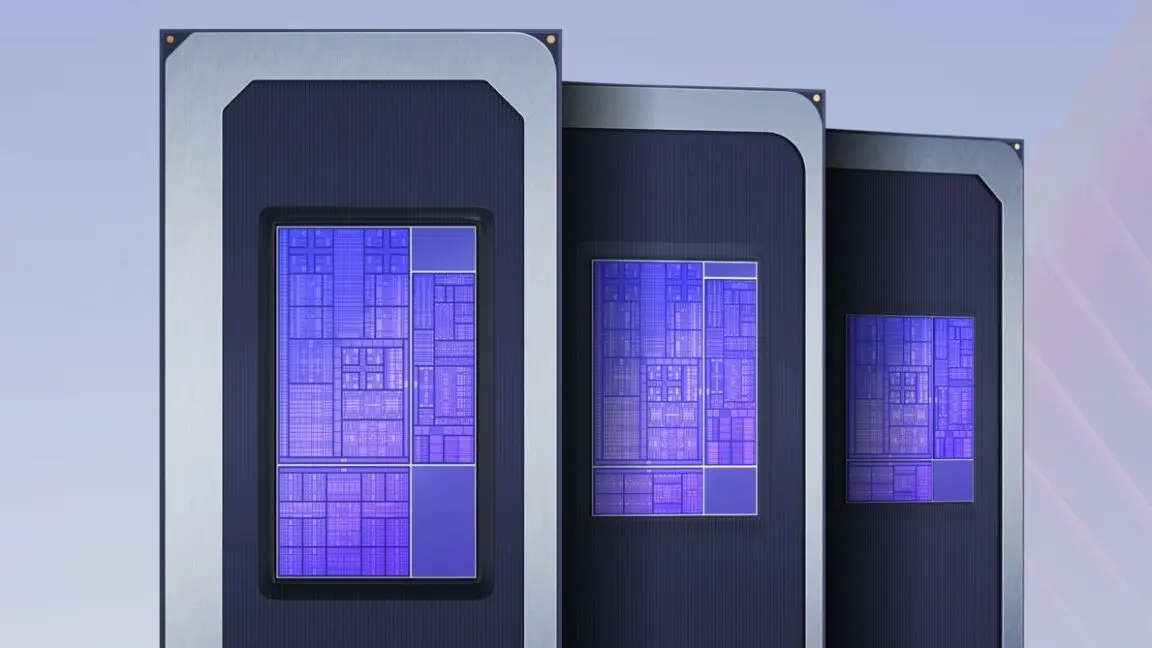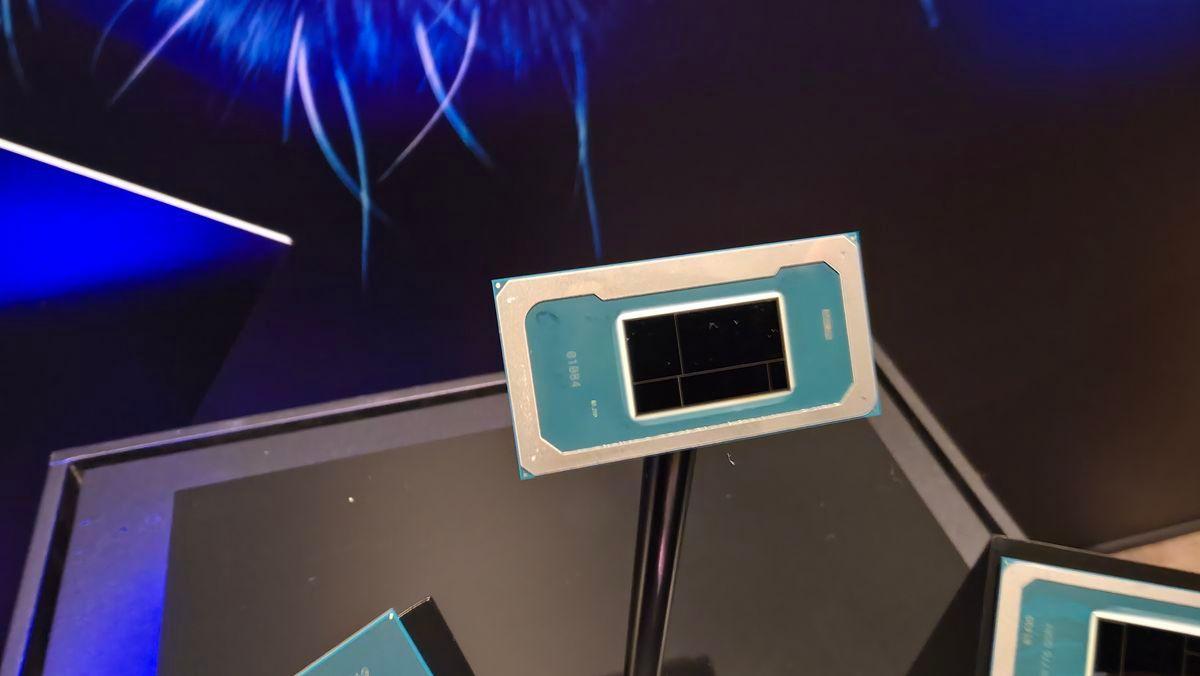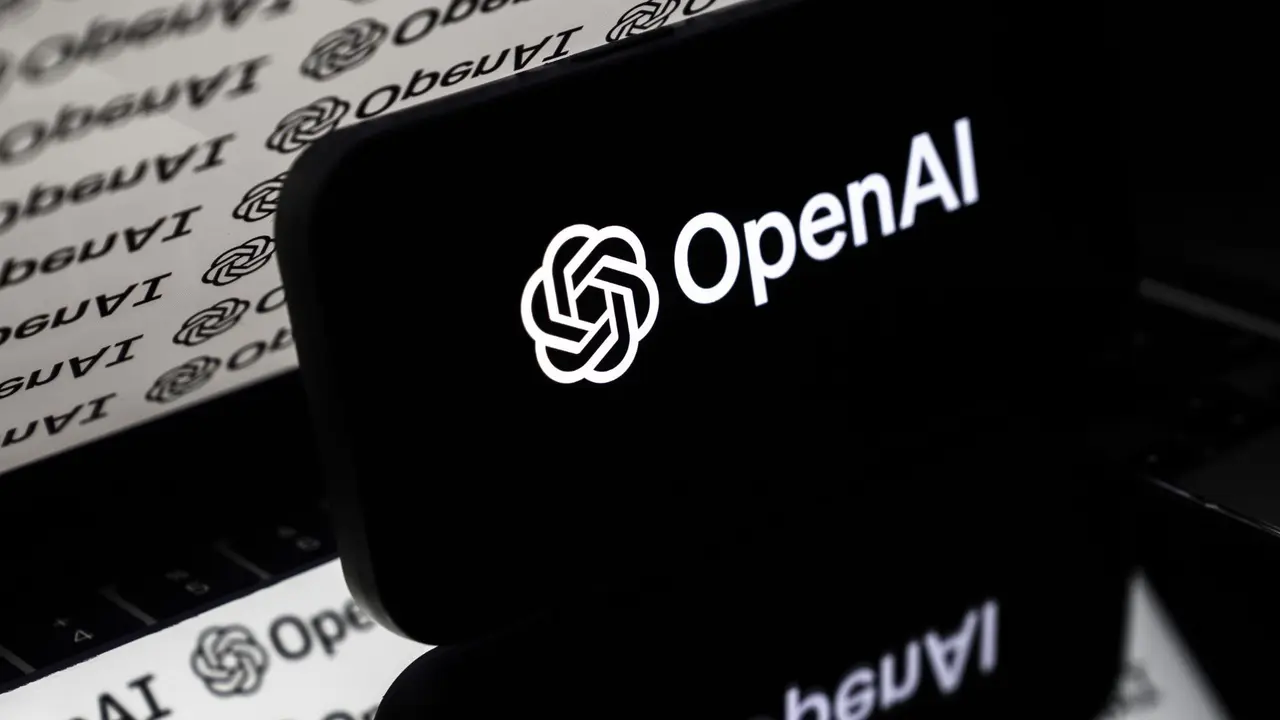Intel's Panther Lake: A Leap Forward in CPU Technology with AI Boost
4 Sources
4 Sources
[1]
Intel's upcoming Panther Lake CPU looks like a killer gaming handheld chip thanks to a reported massive graphics upgrade, hefty AI performance and upgraded E-cores
Intel's 18A process node and the Panther Lake CPU that will be the first to use it are together looking like an absolutely critical turning point for the beleaguered chip maker. The good news for Intel is that Panther Lake is shaping up to be a killer mobile CPU, if the latest reports are accurate. First up, according to some device ID listings uncovered by X user InstLatX64 (via WCCFTech), Panther Lake will be getting Intel's next-gen Darkmont E-cores, not the Skymont E-cores already seen in the Arrow Lake generation of CPUs. This makes sense on two counts. First, Darkmont is said to be a revised and upgraded version of Skymont, rather than a radical new design. Second, Intel is on record that Darkmont is going to be the basis of its Clearwater Forest server chip early next year. And that will be built on 18A silicon. In other words, Darkmont has been designed for 18A, while Skymont would need to be redesigned and ported from the TSMC N3 node on which it's currently being manufactured. Next up, the chip is said to sport 180 TOPS of total AI processing power. That's a big step up over the 120 TOPS of its current Lunar Lake mobile CPU. Lunar Lake largely splits its tops between a dedicated NPU and the GPU, with 48 TOPS from the NPU and 67 TOPS from the GPU. The remaining 5 TOPS come courtesy of the CPU cores. A fair chunk of that step from 120 to 180 TOPS is likely to come from Panther Lake's GPU, arguably the most exciting element of the new chip. It not only gets an upgrade to Intel's new third-gen Celestial GPU architecture, but it also steps up from the eight graphics Battlemage-spec cores in Lunar Lake to 12 cores. It's fairly likely Celestial will be more performant per core than Battlemage. So, an expectation of over 50% more raw performance is reasonable, though that will not necessarily translate into 50%-plus higher in-game frame rates. For the record, Panther Lake will also get Intel's new Cougar Cove P-cores. The top SKU is reported to be a chip with four P-Cores, eight E-cores and a further four low-power E-cores, perhaps of a lower Skymont specification. Anyhow, Panther Lake certainly has the makings of a fantastic chip for handheld gaming PCs. On paper, it should have the measure of AMD's latest Strix Point APU, as seen in the Ayaneo 3. Intel's current Lunar Lake chip, used to great effect in the MSI Claw 8 AI+ A2VM handheld, is pretty competitive with AMD's Strix Point chip, as it is. Add 50% more graphics cores and it should really fly. Moreover, the success of the Panther Lake mobile CPU and its Celestial iGPU should help encourage Intel to keep faith with GPUs generally and roll out a discrete Celestial-based graphics card for desktop gaming PCs. Goodness knows, we need as much competition as we can get in that space.
[2]
More Details on Intel Panther Lake AI Performance and Core Architecture
The upcoming release marks a crucial step for Intel, as it's the first processor to use Intel's in-house developed 18A process node. This SoC's performance improvements are expected to significantly enhance computing power, especially for AI tasks. Intel's fate in the CPU market -- and its IFS (Integrated Foundry Services) business -- hinges on how well Panther Lake performs. This processor is more than just a regular chip; it's a make-or-break product for Intel in the near future. At its core, the Panther Lake architecture will feature both P-Cores, based on Intel's Cougar Cove design, and E-Cores, based on the Darkmont architecture. This combination is aimed at delivering much better performance than what we've seen before. The chips will also feature an NPU, or Neural Processing Unit, which is expected to reach an impressive 180 TOPS (Tera Operations Per Second), making it a solid option for AI workloads that require heavy data processing. Although the full specs aren't yet clear, this chip could be a major contender in areas that demand high-performance computing. Panther Lake will primarily target notebooks and offer configurations with up to four P-Cores, eight E-Cores, and four LP E-Cores. Intel's Xe3 "Celestial" graphics architecture will also be included, providing up to 12 Xe3 execution units for strong integrated GPU performance. Three different power options -- 15W, 25W, and 45W -- will give manufacturers the flexibility to design laptops that balance performance with battery life. Engineering samples of Panther Lake are already being sent to Intel's partners, with mass production set to begin in late 2025. Source: hkepc
[3]
Panther Lake Variants: 4+8+0+4Xe and 4+8+4+12Xe Configuration Details
The forthcoming Intel Panther Lake series introduces a comprehensive microarchitectural overhaul encompassing CPU cores, GPU engines, and neural accelerators. At the heart of the design are two distinct core microarchitectures: "Cougar Cove" for high-performance workloads and "Darkmont" for energy-efficient operation. This delineation replaces the existing "Lion Cove" performance cores and "Skymont" efficiency cores deployed in the Core Ultra 200 lineup. The distinction is drawn from an official update to the perfmon tool on Intel's GitHub repository submitted on April 12, which references both codenames explicitly. Panther Lake extends Intel's heterogeneous design philosophy by combining these core types to optimize power and performance across a range of use cases. significant upgrade in Panther Lake is the integration of Intel's third-generation Xe GPU microarchitecture, codenamed "Celestial." This GPU iteration delivers improved shader throughput, enhanced media encoding/decoding blocks, and greater parallelism for compute tasks. Three GPU configurations have been confirmed: entry-level, mid-tier, and high-end models featuring 4, 12, and 16 execution units, respectively. These options allow OEMs to tailor GPU capability to device segments ranging from ultraportable laptops to thin gaming notebooks. The Celestial GPU also incorporates improved power gating and dynamic voltage/frequency scaling to adjust performance in real time, aligning with Intel's emphasis on efficiency. In parallel with CPU and GPU updates, Panther Lake enhances its neural processing capabilities through an updated NPU block. The NPU now supports wider vector operations and higher clock domains, boosting performance for AI inference tasks such as image recognition, natural language processing, and recommendation engines. On-die memory architecture benefits from refined controller logic, delivering higher sustained bandwidth and reduced latency. Advanced power-state transitions for memory and peripheral interfaces contribute to lower idle-power consumption, key for mobile platforms where battery life is critical. To accommodate diverse system requirements, Panther Lake offers multiple SKU configurations. Most variants combine four "Cougar Cove" performance cores with eight "Darkmont" efficiency cores. GPU options in these models include four or twelve Xe EUs, yielding 4+8+4+4Xe and 4+8+4+12Xe configurations. A specialized 4+8+0+4Xe variant eliminates "Darkmont" cores under light-load scenarios, trading off ultralow-power operation for a higher base power envelope set at 45 W TDP. This configuration is intended for systems requiring prolonged high-load operation, such as gaming notebooks and mobile workstations. A further 4+0+4+4Xe SKU is also available, prioritizing discrete GPU-style performance for tasks that do not benefit significantly from additional efficiency cores. Comparative analysis with current Core Ultra 200 processors highlights the advancement in core design and power management. Lunar Lake and Arrow Lake chips rely on a homogeneous "Lion Cove" performance core design with "Skymont" efficiency cores, but lack the GPU and NPU improvements of Panther Lake. The newer Xe3 GPU and enhanced NPU in Panther Lake provide measurable gains in parallel compute and AI workloads. Moreover, the refined memory subsystem and dynamic power control architectures are expected to yield better battery life in thin-and-light devices without sacrificing peak performance. Source: ithome
[4]
Intel's Panther Lake SoCs Confirmed To Feature Cougar Cove P-Cores & Darkmont E-Cores; Reveals New PCI ID Listings
Well, Intel's next-gen Panther Lake platform is pretty close to launch, and developers have started to speed up the enablement work, notably on the individual architectures. The industry has huge hopes for Panther Lake, not only because it comes at a time when Intel's CPU business is dwindling, but PTL is going to be Intel's first chip to feature the in-house 18A process node, which will also decide the fate of IFS. Now, based on new PCI ID listings spotted by @InstLatX64, it is evident that Panther Lake will feature Cougar Cove P-Cores & Darkmont E-Cores, and this configuration will likely put Intel at a competitive position in the mobile segment, to say the least. Well, the Darkmont E-core architecture was initially said to debut with Clearwater Forest Xeon CPUs, which will also be built on Intel's 18A, while Panther Lake was said to come with Skymont for the E-cores, but it seems like plans have now been changed. While specific details around Panther Lake and its SKUs are confined for now, we do know that the lineup is set to feature the Xe3 "Celestial" graphics architecture, and interestingly, we did get information about what some of the SKUs would look like in a previous leak. In terms of power ratings, Panther Lake is claimed to come with max PL2 ratings of 80W (45W PL1), 64W (28W PL1) and 54W (15W PL1), so it is safe to say that we are looking at top-notch performance here. Interestingly, PTL will also feature the 5th generation of Intel's dedicated AI engines called the NPUs, which will reportedly equip the SoCs with up to 180 TOPS of AI power, which is a significant leap compared to what we saw with Lunar Lake. Panther Lake-H CPUs will support LPDDR5X 6800/7467/8533 MT/s speeds for memory support and DDR5 6400/7200 MT/s speeds. Well, this is a quick roundup of PTL SKUs. In terms of release dates, we are likely targeting an H2 2025 window, with volume production moving into 2026. We do know that Panther Lake is already being sampled with partners, so it won't be long before we see the lineup in the markets.
Share
Share
Copy Link
Intel's upcoming Panther Lake CPU promises significant advancements in graphics, AI performance, and core architecture, positioning it as a potential game-changer for mobile computing and gaming handhelds.
Intel's Panther Lake: A Technological Milestone
Intel's upcoming Panther Lake CPU is shaping up to be a critical turning point for the chip maker, promising significant advancements in graphics, AI performance, and core architecture. Set to be the first processor using Intel's in-house developed 18A process node, Panther Lake is poised to revolutionize mobile computing and gaming handhelds
1
2
.Advanced Core Architecture
Panther Lake will feature a combination of high-performance "Cougar Cove" P-cores and energy-efficient "Darkmont" E-cores. This heterogeneous design aims to optimize power and performance across various use cases
3
. The top SKU is reported to include four P-cores, eight E-cores, and an additional four low-power E-cores1
.Graphics Powerhouse
One of the most exciting elements of Panther Lake is its graphics capabilities. The chip will incorporate Intel's new third-gen Celestial GPU architecture, with configurations offering up to 12 or 16 execution units. This represents a significant upgrade from the eight Battlemage-spec cores in the current Lunar Lake generation, potentially delivering over 50% more raw performance
1
3
.AI Performance Boost
Panther Lake is set to make substantial strides in AI processing power. The chip is reported to achieve 180 TOPS (Tera Operations Per Second) of total AI processing power, a significant increase from the 120 TOPS of the current Lunar Lake mobile CPU. This enhancement is largely attributed to improvements in both the dedicated Neural Processing Unit (NPU) and the GPU
1
2
.Flexible Configurations
Intel is offering multiple SKU configurations to cater to diverse system requirements. These include variants like 4+8+4+4Xe, 4+8+4+12Xe, and 4+8+0+4Xe, allowing manufacturers to balance performance, power efficiency, and specialized capabilities for different device segments
3
.Related Stories
Implications for Gaming and Mobile Computing
With its enhanced graphics and AI capabilities, Panther Lake is positioned to be a formidable chip for handheld gaming PCs. It is expected to outperform AMD's latest Strix Point APU, potentially setting a new standard for mobile gaming performance
1
.Market Impact and Release Timeline
The success of Panther Lake is crucial for Intel, not only for its CPU business but also for its Integrated Foundry Services (IFS). Engineering samples are already being sent to partners, with mass production scheduled to begin in late 2025
2
4
.As the industry eagerly anticipates Panther Lake's release, its performance could significantly influence Intel's position in the competitive CPU market and potentially encourage further developments in discrete graphics cards for desktop gaming PCs
1
4
.References
Summarized by
Navi
Related Stories
Intel's Future CPU Roadmap: Panther Lake, Wildcat Lake, and Nova Lake Specifications Leaked
08 Feb 2025•Technology

Intel's Panther Lake Processors: A Potential Return to Form with Advanced Features
09 Oct 2025•Technology

Intel Unveils Panther Lake CPUs at Computex 2025: A Leap in Performance and Efficiency
19 May 2025•Technology

Recent Highlights
1
AI Chatbots Sway Voters More Effectively Than Traditional Political Ads, New Studies Reveal
Science and Research

2
Trump signs executive order to override state AI laws despite bipartisan pushback
Policy and Regulation

3
OpenAI warns upcoming AI models will likely pose high cybersecurity risk with zero-day exploits
Technology





